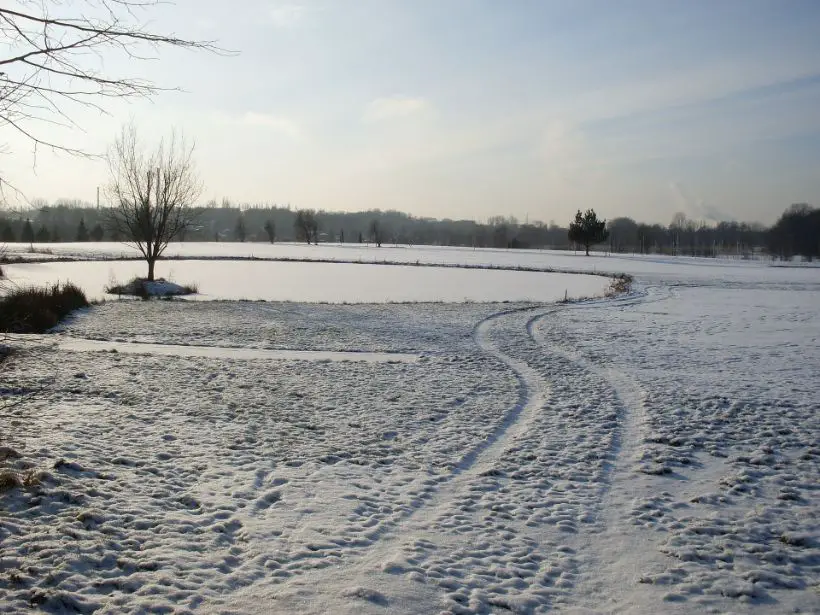Devout golfers never miss a chance to get out on the golf course. Sometimes this means hitting the links in less-than-ideal conditions.
Whether it’s playing in the scorching heat or in the freezing cold, most avid golfers don’t let the weather get in their way of playing the game they love.
Unlike playing in the heat, golfing in the cold poses some unique challenges. Golfing in extremely cold weather can cause driver damage due to the low temperature.
In the article below, we are going to cover what you need to know about hitting your driver in cold weather. We will look at if cold weather can damage your club, how to prevent damage in the cold weather, plus much more. We have a lot to cover so let’s jump in!
What Temperature Is Too Cold to Hit A Driver?
Golfing in cold weather can damage your driver shaft and driver head in certain situations. Luckily, there are ways to prevent this damage so you can keep teeing it up all year round.
Today’s drivers are tough enough to stand up to the cold and can be played with in below-freezing temperatures. Nearly all drivers on the market today are made from titanium and other similar metal composites. These metals will remain strong in any conditions including extremely cold weather.
Unlike driver faces, driver shafts are prone to breaking in the cold. Golf shafts are typically resilient in normal weather; however, cold weather can cause them to splinter or snap.
Modern-day drivers still should be able to stand up to the cold weather. Just be sure to avoid slamming your driver down on the frozen ground after the investable snap hook.
Can Hitting A Driver In Extreme Cold Damage The Club?
While these drivers are made to last, they are not immune to breaking or cracking. Drivers that have had years of use or that have not been properly taken care of will be more prone to damage in cold weather. Let’s cover the top 3 ways why drivers crack or break in cold temperatures.

Top 3 Reasons Why Drivers Get Damaged In The Cold
1.) Hitting Frozen Golf Balls
Hitting cold golf balls, especially frozen range balls, is a surefire way to damage your driver. Golf balls become much denser when frozen and will not compress as expected at impact.
This is one of the main risks to your driver’s face and shaft when golfing in cold weather. Skip the driving range during the winter months or opt for warming up in an indoor simulator. You will thank yourself later.
2.) Grounding Driver Into The Frozen Turf
When the ground is frozen, it’s very important to avoid excessive grounding of the club face. Mishitting a driver into the frozen ground can not only crack your driver or snap your shaft, but it can also leave nasty scratches. Be sure to tee the ball up a little higher when teeing it up on a frozen course.
3.) Poor Club Storage
Avoid storing your driver and golf clubs in the cold. While this is last on our list and frankly not a huge risk, proper storage of your golf clubs will promote longevity.
Store your golf clubs in a climate-controlled part of your house or a heated garage. Don’t leave them out in the cold. Excess exposure to the cold can lead to dry rotting of your grips and potentially cause underlying issues over time.
Final Thoughts
It takes a special kind of golfer to be committed to playing in freezing weather. This dedication to the game does come with risks. Avoid hitting frozen golf balls with your driver and be sure to properly store all your golf clubs during the winter months. Prevention goes a long way in protecting your golf gear in the cold!
Hopefully, you liked this article and found it informative. Check out our other blog posts if you liked this one!


